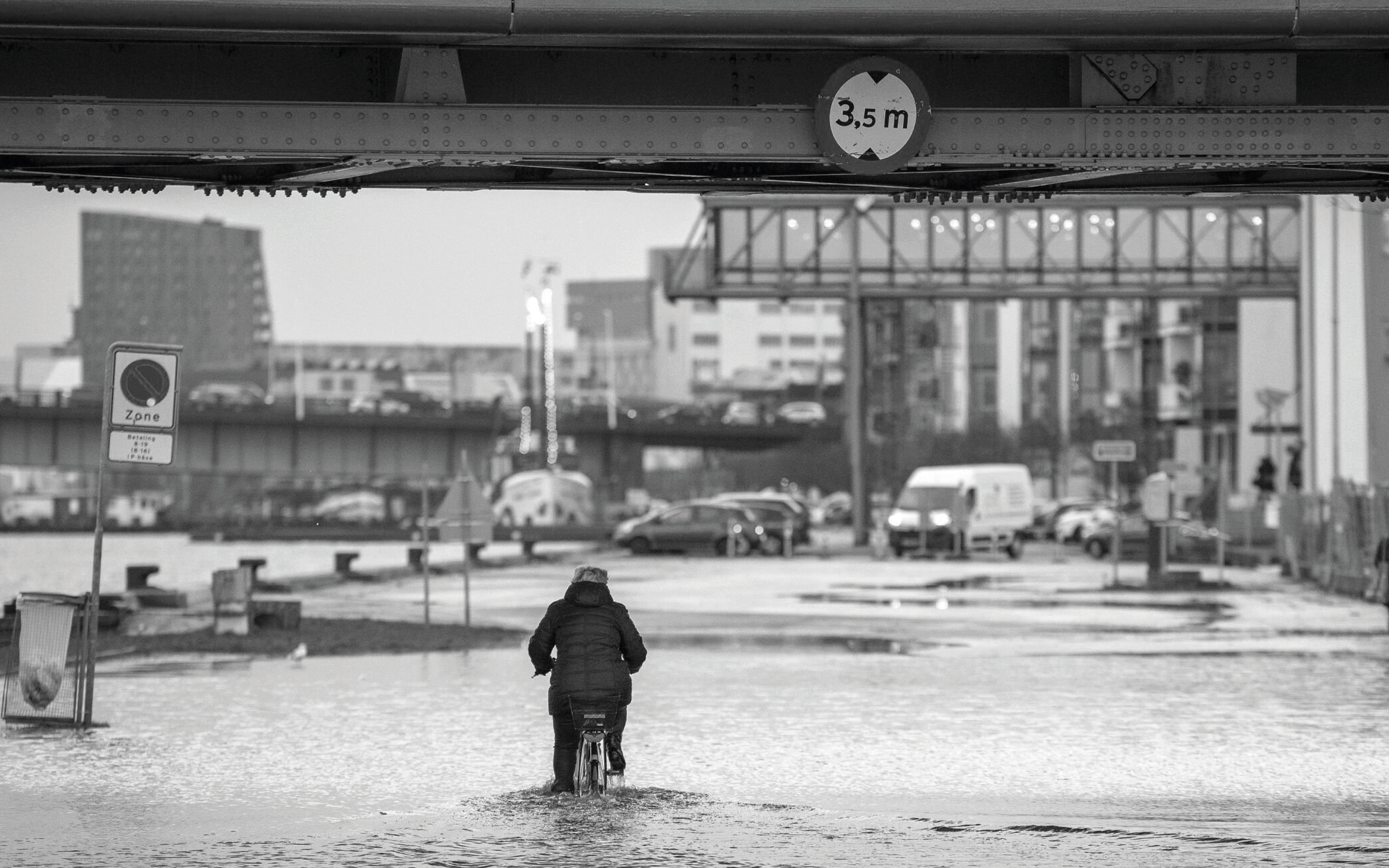What is the project about?
The overall vision of the project is to climate-proof Vestbyen's waterfront and transform the area into a vibrant and inclusive neighbourhood in Aalborg. The unpredictable forces of the fjord should not be seen as a challenge, but as a resource that is brought into play to create a closer interaction between city, nature and people.
By ‘inviting the water’ instead of fighting it, the project addresses the consequences of climate change, including rising sea levels and more frequent storm surges. It explores how an adapted cityfront can offer recreational opportunities, social meeting places and improve the ecosystems of the Limfjord.
The project's basic research question is:
‘How to transform a coastal area, where the sea and its life forms contribute to rethinking the development of the new waterfront, as a resilient and adaptable place - in the face of climate changes?’
Why the Wet City?
The title Inviting the "Wet City" - Aalborg Vestby draws on the theory of ”The Dry -’ and "The Wet City ’ developed by Katrin Wiberg, which describes two fundamentally different states of urban areas.
The Dry City represents the modern city, where water is controlled by sewer systems and hard constructions. Here, urban functions are separated from the natural landscape, creating a false sense of security about our ability to manage water.
The Wet City, on the other hand, describes the city as it is affected by climate change such as cloudbursts and storm surges. In this state, the city becomes impassable and water - often contaminated from sewer systems - floods streets and buildings. This creates dangerous and unhealthy environments for both people and nature.
In this project, this understanding of the Wet City is turned on its head. The negative elements of a wet city - flooding, pollution and destruction - are addressed and offset through strategic design. ‘The Wet City is used as a design factor, integrating natural processes such as salt marshes, mussel reefs and eelgrass plantations to create a positive, sustainable and robust cityfront. The water is invited onto the city's terms, and potential threats are transformed into resources that enhance biodiversity and promote interaction between the city's citizens and the life of the fjord.
This approach makes it possible to transform The Wet City from a challenge to a strength, where Aalborg Vestby becomes an example of how we can live with the water - not against it.

Flooding under the cultural bridge, Aalborg Vestby

Flooding at the cultural bridge, Aalborg Vestby

Urban space with permanent flooding, Aalborg Vestby waterfront.
What knowledge was gathered?
The project is based on interdisciplinary knowledge and studies in:
Hydrology and climate adaptation: Analysing sea level rise and storm surges, including scenarios for the year 2100 based on the IPCC's most extreme projections.
Marine ecosystems: Investigating nature-based solutions such as mussel reefs, eelgrass and salt marshes that can both enhance biodiversity and reduce CO₂.
Urban planning and social needs: Studying the functions, usage patterns and traffic conditions of Vestbyen to create a more cohesive and inclusive area.
Case studies: Vejle Fjord sea gardens, have inspired the project to integrate regenerative solutions that benefit both the environment and local communities.
Information sign about the climate adaptation competition for the project area. Aalborg Municipality, 2022
Photo of the model building process. Material: bookbinding cardboard, XPS foam, grey spray paint, sea moss and 2 types of UHU glue.
The Solution
The project presents a multi-pronged solution that combines climate adaptation, sustainable urban development and social innovation:
Resilient design:
- A new dike protects residential areas from flooding, while the harbour area itself is designed to withstand occasional flooding.
- New buildings and existing facilities are adapted to withstand rising water levels.
Nature-based solutions:
- Salt marshes and eelgrass restore the ecosystem and act as wave breakers and flood buffers.
- Mussel and rock reefs improve biodiversity and water quality.
Recreational urban spaces:
- Promenades, lake gardens and public meeting places strengthen the interaction between city and fjord.
- A new harbour area with cafés, street food and activity zones creates life and security all year round.
Social and cultural cohesion:
- Establishing new path connections between residential areas and the harbour ensures better access.
- Collaboration with local actors on activities such as rowing, mussel farming and environmental education.
Conclusion and Reflection
The project demonstrates how coastal cities can be transformed to meet climate change while creating added value for the local community. By inviting the water and integrating nature-based solutions, a future-proof neighbourhood is created that is both robust and vibrant.
However, the reflection points out that success depends on a continuous dialogue between citizens, authorities and experts. The project shows that sustainable urban development requires a holistic approach that weaves together social, environmental and economic considerations.
‘Inviting the Wet City’ is not just a solution for Aalborg, but a model for how cities can live with water - not against it.
My role and competences
The project was carried out as part of a group-orientated course at Aalborg University, consisting of four students. Here I have primarily worked with research, graphic communication, plant expertise and design. I have been the group's contact to the local community, for example during knowledge gathering.
Through the project, I have strengthened my graphic and communication skills and expanded my experience with the 3D tool Rhino. This has given me valuable competences in interdisciplinary collaboration and design development.
Visualisation sketch of the salt marsh in front of the rowing clubs at Søsportsvej in Aalborg according to the project.

